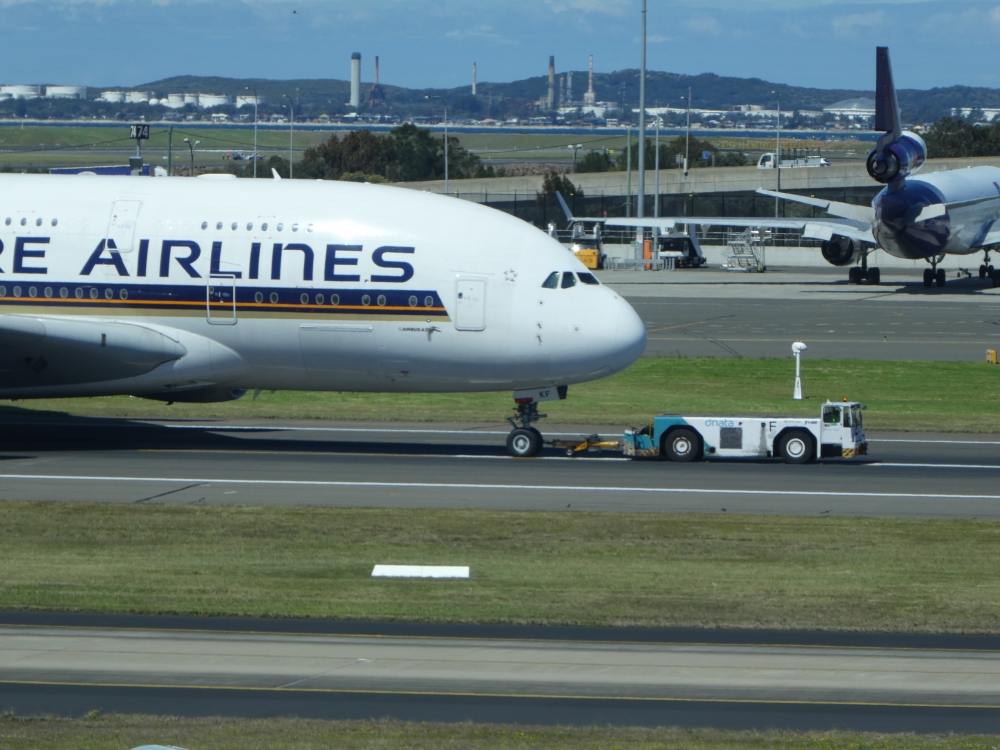A 7.9 per cent increase in 2016 international airline passenger traffic to and from Australia has prompted a government prediction the number of people flying in and out of the country could double within a decade.
The prediction by Australian Transport Minister Darren Chester assumes the growth experienced last year is maintained and comes as passenger numbers rose from 21.5 million in 2006 to 37.87 million in 2016.
But the robust passenger growth outlined in a Bureau of Infrastructure, Transport and Regional Economics report released Friday failed to match a jump of 9.9 per cent in the number of seats, to 49.3 million, helping to keep air fares at historically low levels in real terms.
The big influx of seats saw utilisation — the proportion of seats filled by passengers — fall from 80.3 per cent in 2015 to 79 per cent in 2016.
At major airports, planes servicing Melbourne were the fullest with seat utilisation at 80.5 per cent while those using Perth recorded the lowest figure at 75.6 per cent.
Destinations with highest seat utilisation were Hong Kong (85.2 per cent seat utilisation), Japan (82.2 per cent) and Taiwan (81.6 per cent).
The figures also underscored the impact of low-cost carriers on the market.
Low-cost carriers AirAsia X, Cebu Pacific Air, Indonesia AirAsia, Indonesia AirAsia Extra, Jetstar, Jetstar Asia, Scoot and Tigerair Australia together accounted for 18.2 per cent of international passenger traffic in 2016, up from 16.4 per cent the previous year.
Qantas’ mainline operations retained 2016’s biggest market share at 15.6 per cent, but this had dropped by 12.5 percentage points over the past decade. Jetstar came in second at 9.5 per cent, up 7.6 points compared to 2006, to see the Qantas Group share down 5.5 percentage points compared to a decade ago.
However, the overall market share held by Australian carriers was down only slightly compared to 2006, from 32.4 per cent to 32.1 per cent.
The flying kangaroo’s alliance partner, Dubai-based Emirates, completed the top three with 8.8 per cent of the market, followed by Singapore Airlines with 8.1 per cent and Air New Zealand at 6.8 per cent.
New Zealand, Singapore, United Arab Emirates, USA, and Indonesia were the top five countries in terms of passenger movements with Singapore the biggest single destination.
Growth markets included China (up 28.7 per cent), Japan (up 23.6 per cent) and Indonesia (14.9 per cent).
Chester said the expected the growth in passenger traffic between Australia and China to continue in light of a recently concluded an “open-skies style’’ agreement between the countries.
“We’ve also settled our first treaty-level air services framework with Israel, recently signed an aviation agreement with Peru, secured more flights to Fiji via revised arrangements, formally designated Sunshine Coast and Wellcamp Airports as international airports, and officially opened Canberra Airport’s international terminal,’’ he said in a statement.
“In the past 12 months, we’ve also removed Avalon Airport from the list of major Australian airports, meaning we can offer unrestricted capacity to international airlines.’’
“Traffic to and from other key markets such as New Zealand, Singapore, the United States and Hong Kong also continues to grow as does international air freight, with around one million tonnes carried in 2016, an increase of nearly fou
























